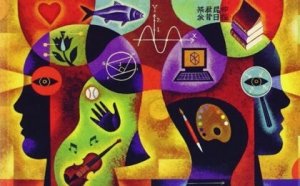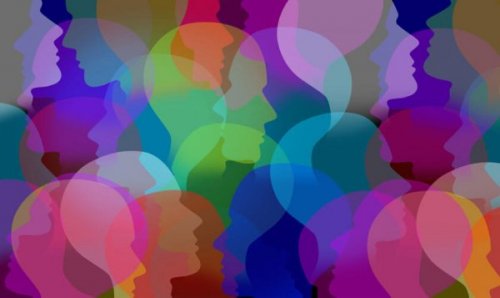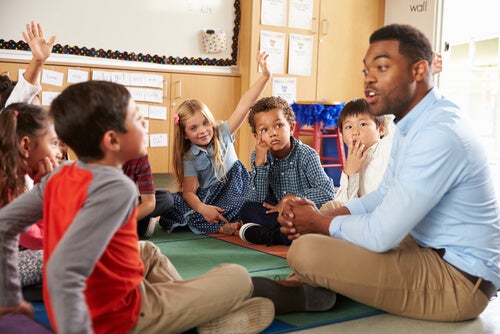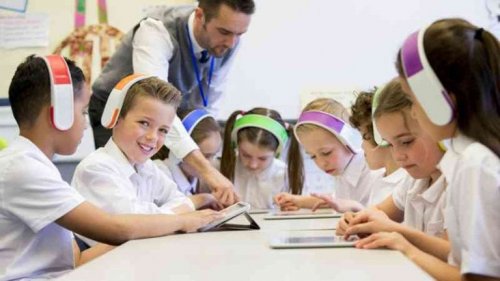The Theory of Multiple Intelligences


Written and verified by the psychologist Valeria Sabater
Understanding the theory of multiple intelligences and applying it within a classroom is the first step towards shaping a more inclusive school system. Many of the current educational models tend to limit the particular potential of each student, demonstrating without a doubt that we need an alternative and more sensitive, diverse, and revolutionary model.
Howard Gardner came up with his theory of multiple intelligences over thirty years ago. Today, we continue to use his novel and inspiring suggestions when it comes to instilling progress in the field of education. We say this for an almost obvious fact: a lot of school systems continue to use a traditional pedagogical foundation.
We’re aware it isn’t always easy to respond to the diversity of a classroom when a teacher has too many students per class. It isn’t easy when the educational community doesn’t get support from political and social organizations or, oftentimes, from the children’s own families. However, it’s a difficult fact to ignore.
Present and future societies are ever-changing. Our modernity isn’t only more complex but also demands much more from each one of us. If the school isn’t attuned to the dynamics that take place in that ecosystem that Bronfenbrenner mentioned in his model, we’ll project unprepared people into the world. People who aren’t too skilled, can’t function effectively, and can’t promote a real advance for tomorrow.
Theory of multiple intelligences – How to work with them in a classroom

Gardner’s model is essentially based on a key idea: there’s not a single type of intelligence. Instead, each person has a wide variety of cognitive skills that make them unique. We must say that, yes, there’s always been criticism about this theory. Thus, articles such as this one published by Psychology Today remind us that there are still cracks in the literature used to support this theory.
Thus, we must say that Gardner pointed out on numerous occasions that multiple intelligences are a framework from which to view teaching from a broader, richer and, above all, inclusive perspective. This is a reference that can serve as an inspiration to favor the potential of students and to teach them to think in a different way, to discover their abilities and use them to their favor.
Also, something that teachers certainly know is that applying the model of multiple intelligences in the classroom isn’t that simple. We must review the current educational models, which means we need committed educators. We also need adequate follow-ups to ensure the achievement of curricular objectives. That is, that the learning is truly significant and that each child is making real progress.
Let’s find out what are the techniques that can allow us to apply the theory of multiple intelligences in a classroom setting.
Active methodologies
These are ideal to promote the autonomy and participation of a student in the learning process. Through them, the child has a more protagonistic role when it comes to their own learning. This means that they stop being a passive receiver of knowledge to creating knowledge. All by integrating processes such as creativity, responsibility, group work, curiosity, etc.
- Students can make decisions from this new perspective. They can regulate their learning, and reorient their tasks and knowledge mechanisms to achieve their intended objectives (under the constant supervision of a teacher).
Likewise, this type of methodology must always stick to the official curriculum and have an appropriate evaluation model.
Project-based teaching units

The fulfillment of projects for working the didactic units is another highly suitable mechanism to foster multiple intelligences within a classroom. They’re also an asset that demands a certain dose of creativity from teachers.
- They promote the acquisition of new knowledge, as well as active work and curiosity. Also, they must be able to work multiple intelligences within the same project.
- These projects must be attractive and address classroom diversity. The kind that facilitates motivation and encourages students to use various learning channels. (New technologies, oral and written communication, search for information outside the school itself, etc).
Individualized instruction
As we mentioned above, when integrating a project of multiple intelligences in the classroom, we must, first of all, count on the commitment of the teachers. Thus, it’s essential that the instruction is individualized as much as possible. Thus, the teacher must observe and figure out what type of tasks are best suited to each student.
- For example, the kinesthetic student will be a better learner when their learning process focuses on tasks in which they can move. Likewise, the student with linguistic intelligence will be the one who’s most interested in reading and writing. As you can see, it’s important to identify and appreciate the potential of every child.
- However, just because some stand out in one (or several) types of intelligence doesn’t mean the other types should be neglected.
This kind of educational model will always try to strengthen each cognitive area, meaning each process that integrates each of these types of intelligence.
Understand how the theory of multiple intelligences works

Gardner, Feldman, and Krechevsky (2000) point out that one or more types of intelligence may manifest within each classroom activity. Thus, if you choose blue whales as a project, then you could promote various perspectives:
- Naturalistic intelligence
- Interpersonal (group work)
- Linguistic (reading literature on the subject)
- Musical (listening to whale songs)
Actually, Gardner points out the following: multiple intelligences evolve and manifest throughout our life cycle. They often even depend on maturational factors (such as kinesthetic-body intelligence). All these are characteristics that teachers must understand, remember, and consider.
To conclude, you should note something that’s quite obvious. This model undoubtedly requires greater resources, initiative, and commitment from all social sectors. We must maximize teaching and make it more inclusive and sensitive to the needs of the future. This is undoubtedly an important goal.
The schools of the future demand responsibility and firm commitment above all.
Understanding the theory of multiple intelligences and applying it within a classroom is the first step towards shaping a more inclusive school system. Many of the current educational models tend to limit the particular potential of each student, demonstrating without a doubt that we need an alternative and more sensitive, diverse, and revolutionary model.
Howard Gardner came up with his theory of multiple intelligences over thirty years ago. Today, we continue to use his novel and inspiring suggestions when it comes to instilling progress in the field of education. We say this for an almost obvious fact: a lot of school systems continue to use a traditional pedagogical foundation.
We’re aware it isn’t always easy to respond to the diversity of a classroom when a teacher has too many students per class. It isn’t easy when the educational community doesn’t get support from political and social organizations or, oftentimes, from the children’s own families. However, it’s a difficult fact to ignore.
Present and future societies are ever-changing. Our modernity isn’t only more complex but also demands much more from each one of us. If the school isn’t attuned to the dynamics that take place in that ecosystem that Bronfenbrenner mentioned in his model, we’ll project unprepared people into the world. People who aren’t too skilled, can’t function effectively, and can’t promote a real advance for tomorrow.
Theory of multiple intelligences – How to work with them in a classroom

Gardner’s model is essentially based on a key idea: there’s not a single type of intelligence. Instead, each person has a wide variety of cognitive skills that make them unique. We must say that, yes, there’s always been criticism about this theory. Thus, articles such as this one published by Psychology Today remind us that there are still cracks in the literature used to support this theory.
Thus, we must say that Gardner pointed out on numerous occasions that multiple intelligences are a framework from which to view teaching from a broader, richer and, above all, inclusive perspective. This is a reference that can serve as an inspiration to favor the potential of students and to teach them to think in a different way, to discover their abilities and use them to their favor.
Also, something that teachers certainly know is that applying the model of multiple intelligences in the classroom isn’t that simple. We must review the current educational models, which means we need committed educators. We also need adequate follow-ups to ensure the achievement of curricular objectives. That is, that the learning is truly significant and that each child is making real progress.
Let’s find out what are the techniques that can allow us to apply the theory of multiple intelligences in a classroom setting.
Active methodologies
These are ideal to promote the autonomy and participation of a student in the learning process. Through them, the child has a more protagonistic role when it comes to their own learning. This means that they stop being a passive receiver of knowledge to creating knowledge. All by integrating processes such as creativity, responsibility, group work, curiosity, etc.
- Students can make decisions from this new perspective. They can regulate their learning, and reorient their tasks and knowledge mechanisms to achieve their intended objectives (under the constant supervision of a teacher).
Likewise, this type of methodology must always stick to the official curriculum and have an appropriate evaluation model.
Project-based teaching units

The fulfillment of projects for working the didactic units is another highly suitable mechanism to foster multiple intelligences within a classroom. They’re also an asset that demands a certain dose of creativity from teachers.
- They promote the acquisition of new knowledge, as well as active work and curiosity. Also, they must be able to work multiple intelligences within the same project.
- These projects must be attractive and address classroom diversity. The kind that facilitates motivation and encourages students to use various learning channels. (New technologies, oral and written communication, search for information outside the school itself, etc).
Individualized instruction
As we mentioned above, when integrating a project of multiple intelligences in the classroom, we must, first of all, count on the commitment of the teachers. Thus, it’s essential that the instruction is individualized as much as possible. Thus, the teacher must observe and figure out what type of tasks are best suited to each student.
- For example, the kinesthetic student will be a better learner when their learning process focuses on tasks in which they can move. Likewise, the student with linguistic intelligence will be the one who’s most interested in reading and writing. As you can see, it’s important to identify and appreciate the potential of every child.
- However, just because some stand out in one (or several) types of intelligence doesn’t mean the other types should be neglected.
This kind of educational model will always try to strengthen each cognitive area, meaning each process that integrates each of these types of intelligence.
Understand how the theory of multiple intelligences works

Gardner, Feldman, and Krechevsky (2000) point out that one or more types of intelligence may manifest within each classroom activity. Thus, if you choose blue whales as a project, then you could promote various perspectives:
- Naturalistic intelligence
- Interpersonal (group work)
- Linguistic (reading literature on the subject)
- Musical (listening to whale songs)
Actually, Gardner points out the following: multiple intelligences evolve and manifest throughout our life cycle. They often even depend on maturational factors (such as kinesthetic-body intelligence). All these are characteristics that teachers must understand, remember, and consider.
To conclude, you should note something that’s quite obvious. This model undoubtedly requires greater resources, initiative, and commitment from all social sectors. We must maximize teaching and make it more inclusive and sensitive to the needs of the future. This is undoubtedly an important goal.
The schools of the future demand responsibility and firm commitment above all.
All cited sources were thoroughly reviewed by our team to ensure their quality, reliability, currency, and validity. The bibliography of this article was considered reliable and of academic or scientific accuracy.
Amstrong, Thomas (1994) Multiple Intelligences in the Classroom. Atlantic Books
Amstrong Thomas (2012) El poder de la neurodiversidad. Ediciones Paidós
Gardner, Howard (2011) Inteligencias Múltiples: la teoría en la práctica. Paidós
This text is provided for informational purposes only and does not replace consultation with a professional. If in doubt, consult your specialist.







